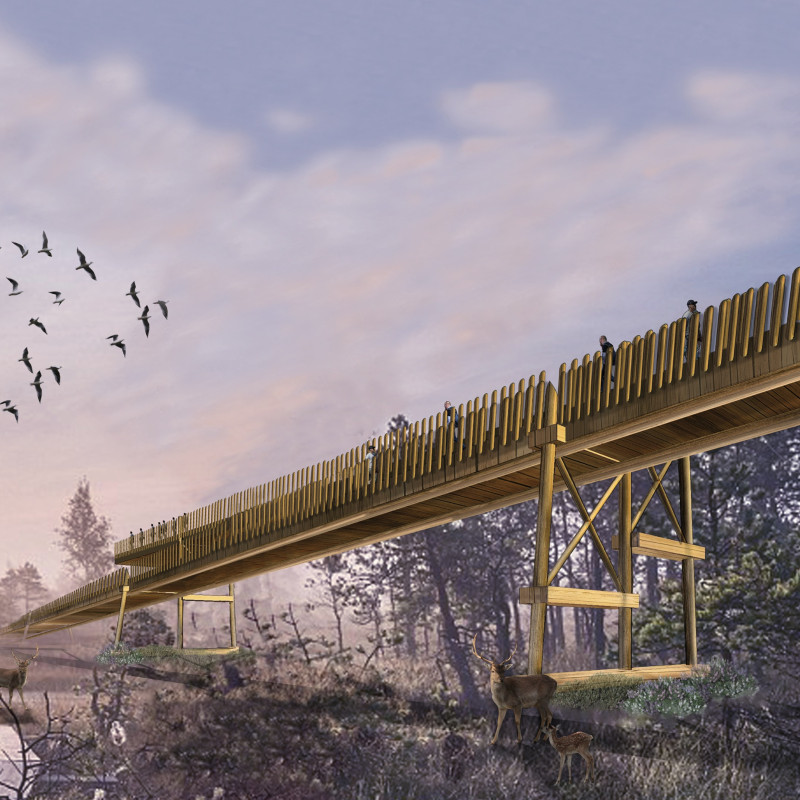5 key facts about this project
The Inhabited Bridge at The Great Kemeri Bog functions as a significant addition to the ecological landscape of Kemeri National Park. Designed to enhance visitor experiences, the bridge operates as both a path for exploration and a center for information. It allows people to engage deeply with the surrounding natural environment, providing an opportunity to appreciate the unique features of the bog. Visitors ascend from the ground into the treetops, thereby connecting the man-made structure to the beauty of the landscape.
Design Concept
The bridge invites exploration while creating spaces for various activities. Areas for resting, playing, and camping have been integrated into the design, encouraging visitors to spend more time in the environment. This approach fosters a stronger connection to nature and enhances the overall experience of the bog.
Construction Techniques
Timber from nearby trees, specifically pine, is the main material used for the bridge. Trees in this area can grow up to 45 meters tall and have canopy spreads of around 8 meters. The design involves cutting down about 200 trees, which will provide around 900 meters of usable timber. This wood will be prepared on-site into beams and planks, aligning the construction with eco-friendly practices.
Sustainability Features
Sustainability plays an essential role in the design. The bridge uses piezoelectric technology to generate energy from visitors walking on it. This method helps reduce the environmental impact of the structure while actively involving people in energy production during their visit.
Design Details
The bridge draws inspiration from the existing boardwalk at Kemeri Bog, which influences its construction method. The supports are carefully placed to manage loads, ensuring stability on an unstable surface. This design choice minimizes sinking and maintains the natural conditions of the bog. Elevated walkways offer clear views of the landscape, allowing visitors to engage fully with the rich scenery of the park.



























